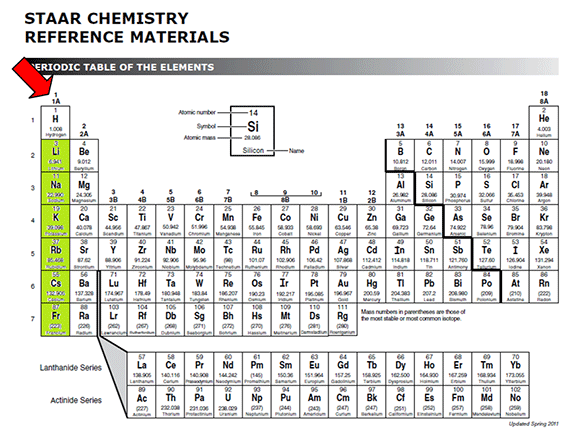Finally, What elements can donate electrons?, The element that acts as the electron donor exists as a cation in the product compound. The atom
Atom
An atom is the smallest constituent unit of ordinary matter that has the properties of a chemical element. Every solid, liquid, gas, and plasma is composed of neutral or ionized atoms. Atoms are extremely small; typical sizes are around 100 picometers (1×10⁻¹⁰ m, a ten-milliont…
Which elements can be induced to accept or donate electrons?
View this answer. The best predictor of whether a chemical element will donate electrons or accept electrons is its position on the periodic table. Typically elements... See full answer below.
Which elements accept electrons more readily than others?
For instance, copper metal will donate electrons to silver ions to precipitate silver metal. The copper ions can then be precipitated by zinc metal, which donates its electrons to the copper. In the case of these reactions, copper donates electrons in the first and accepts electrons in the second. Guy Clentsmith.
Which elements are electron acceptors?
Oxygen and hydrogen are at either end of the spectrum of electron acceptors and donors, but there are many substances in between than can readily accept electrons in one situation and donate them in another. Cells need a lot of primary electron donors and final electron acceptors on hand for the number of chemical reactions going on all the time.
Why do elements to the left tend to donate electrons?
Jul 21, 2021 · Finally, What elements can donate electrons?, The element that acts as the electron donor exists as a cation in the product compound. The atom that acts as an electron acceptor exists as an anion in the product compound. Example: In the reaction of Na with Cl 2 to give NaCl, Na atoms donate electrons to give Na + and Cl atoms accept electrons to give Cl –.

What is proton conductor?
A proton conductor is an electrolyte, typically a solid electrolyte, in which H+ but not electrons, are the primary charge carriers. For practical applications, proton conductors are usually solid materia. Continue Reading. There is no element in periodic table that can conduct electricity without electrons.
How many electrons does a halogen have?
Halogens have 7 electrons in their valence shell, they easily accept one to become negative ions, such as F-. F has the highest electronegativity of any element, which characterizes the element’s tendency to accept electrons. Oxygen needs 2 electrons to fill the outer shell, it will easily attract them.
How many electrons does phosphorus have?
Phosphorus has 5 electrons in the outermost shell. By octet rule atom tends to combine in such a way that they’ll have 8 electrons in the valence shell. So phosphorous either gain 3 electrons or lose 5 electrons (phosphorous has 8 electrons in the second shell) while combining.
How many electrons does a bromine atom have?
A neutral bromine atom would also have 35 electrons. In order for a bromine atom to become a 1− bromide ion, it would have to gain an additional electron. Below is the Lewis dot structure for a neutral bromine atom, which has seven valence electrons.
What is the atomic number of Na?
The atomic number of Na is 11. According to the periodic table, the closest noble gas to Sodium is Neon (a noble gas) with an atomic number of 10. Hence, Sodium has to lose only 1 electron to reach the electronic configuration of Neon and by losing that one electron, it becomes a very reactive element.
Who made the law of octaves?
Law of octaves, in chemistry, the generalization made by the English chemist J.A.R. Newlands in 1865 that, if the chemical elements are arranged according to increasing atomic weight, those with similar physical and chemical properties occur after each interval of seven elements.
How many protons does lithium have?
A lithium atom has 3 protons and 3 electrons. It can lose one of its electrons, making it an ion. It now has more positive protons than electrons so it has an overall positive charge. Therefore it is a positive ion.
How many electrons does a neutral argon atom lose?
A neutral calcium atom has 20 electrons, while a calcium atom that has lost two electrons will have 18 electrons, and a neutral argon atom also has 18 electrons.
Do metals lose electrons?
Explanation: In general, metals will lose electrons to become a positive cation and nonmetals will gain electrons to become a negative anion. When an ionic compound forms, the more electronegative element will gain electrons and the less electronegative element will lose electrons.
Answer
Because aluminum loses 3 types of electrons and it donates it to fluorine.
New questions in Physics
A simple pendulum has a period of 3.45 seconds. When the length of the pendulum is shortened by 1.0 m, the period is 2.81 seconds. Calculate the orig …#N#inal length of the pendulum b. the value of the acceleration due to gravity

Popular Posts:
- 1. when you donate to gosu doubliputu
- 2. how much does a liver cost to donate
- 3. where to donate a sofa with pickup
- 4. how to donate hair for wigs
- 5. who can you donate hair to
- 6. where to donate clothes in philadelphia
- 7. site where people donate pc parts to other people
- 8. how long should you wait to donate plasma after surgery
- 9. why you should donate to animal shelters
- 10. how soon after you donate blood can you shower